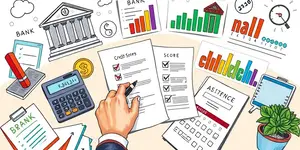
In today’s dynamic financial world, relying solely on traditional banking institutions may limit your borrowing potential and personal freedom.
This comprehensive guide dives into a spectrum of alternative lending solutions, offers practical advice, and equips you to choose the right path confidently.
The era of one-size-fits-all lending is fading as fintech innovators disrupt conventional channels. New entrants—from peer-to-peer marketplaces to digital installment services—are breaking barriers for borrowers.
With revolving lines of credit with fixed spending limits and user-friendly apps, individuals can access capital without the rigid requirements of banks. This shift empowers underserved communities and savvy consumers alike to meet their financial goals.
Alternative personal loans span a broad range of products. Each comes with unique features, eligibility criteria, and cost structures.
Credit cards remain a popular flexible option, offering introductory 0% APR deals and reward programs. However, carrying a balance long term often triggers high-interest charges that erode savings.
Peer-to-peer platforms match borrowers with individual investors, often featuring soft credit pull without score impact and slightly higher APRs to compensate risk.
Homeowners can access substantial funds through Home Equity Loans or HELOCs, benefiting from lower interest rates when collateral is provided but risking their home if payments lapse.
BNPL solutions let you split retailer purchases into equal installments, sometimes interest-free for short periods, but missed payments can incur fees and credit hits.
Many utilities and medical providers now offer interest-free payment plans directly, while charities and nonprofits may extend emergency grants or zero-interest loans after budgeting counseling.
Borrowing from friends or family can save on interest, but carries the potential for relationship strain and tension if expectations are unclear. 401(k) loans allow quick access to your own retirement funds but may trigger tax complications if not repaid.
Payday alternative loans from credit unions cap out around $2,000 and must be repaid within a year, offering a humane alternative to predatory lenders. Meanwhile, cash advance apps provide small, instant advances on earned wages—often with fees or subscription requirements.
Selecting the right option demands a clear understanding of rates, credit checks, and repayment terms. Here’s a snapshot to help you weigh your choices:
APR ranges vary widely: qualified borrowers can secure personal loans at around 7%, while high-risk options may exceed 30%. Funding speeds also differ—some online platforms deposit funds within hours, whereas peer-to-peer and mortgage refinances can take several days.
Every borrowing method carries benefits and trade-offs. Understanding these will guide smarter decisions.
Key Advantages:
Main Drawbacks:
As fintech continues its ascent in 2025, borrowers should watch for evolving regulations on PALs, BNPL, and cash advance services. Increased oversight aims to curb predatory practices and ensure transparency.
Many lenders now offer prequalification tools, allowing you to check potential rates with a soft inquiry that won’t ding your credit score. Pair this with diligent credit-improvement efforts—timely payments and lower utilization—to unlock better deals.
Financial literacy remains crucial. Budgeting, realistic repayment plans, and emergency savings cushions can mitigate reliance on high-cost credit and protect your long-term goals.
Start by defining the precise amount you need and the timeline for repayment. Next, compare APRs, fees, and funding speeds across multiple providers.
Use prequalification tools to gauge offers without harming your score, then select the product that best aligns with your objectives and risk tolerance. By combining strategic borrowing with disciplined repayment, you can strengthen your credit profile over time and avoid unnecessary fees and hidden penalties.
Ultimately, embracing these alternative personal loan options can unlock new flexibility, fuel your ambitions, and help you achieve financial resilience beyond the boundaries of traditional banks.
References













